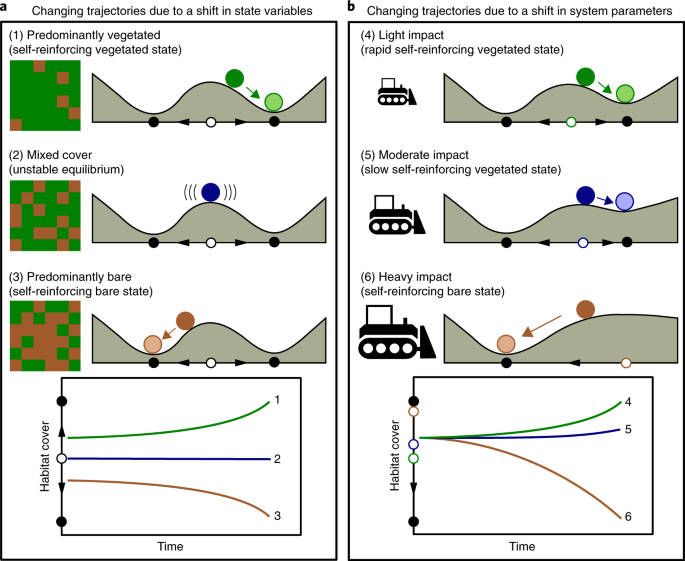Imagine this scenario – it’s a beautiful Saturday morning, and you’re all set to tackle your overgrown lawn. As you wheel out your trusty self-propelled lawn mower, you suddenly realize that it’s not moving as smoothly as it used to. Don’t worry, though, because adjusting the gear on a self-propelled lawn mower is easier than you might think! In this article, we will guide you through the simple steps to get your mower back in top gear and ready to tackle any lawn with ease. So, grab your tools and let’s get started!
Checking Gear Adjustment
Inspecting the drive control lever
When checking the gear adjustment on your self-propelled lawn mower, the first step is to inspect the drive control lever. This lever is responsible for engaging and disengaging the self-propel feature of the mower. Take a close look at the lever to ensure it is properly aligned and securely attached to the mower’s handle. Additionally, check for any signs of damage or wear, such as cracks or loose screws. If you notice any issues during the inspection, adjustments may need to be made.
Examining the gear selection lever
The next component to examine is the gear selection lever. This lever allows you to choose between different gear settings, such as forward, neutral, and reverse. Inspect the gear selection lever to ensure it is in the correct position and that it moves freely without any restrictions. Look for any signs of loose connections or damage that may affect its functionality. If you notice any abnormalities, adjustments may be necessary.
Assessing the traction drive belt
Lastly, it’s important to assess the condition of the traction drive belt. This belt connects the engine to the transmission and is responsible for transferring power to the wheels, enabling the mower to self-propel. Check the traction drive belt for any signs of wear, such as cracks or fraying. Additionally, make sure the belt is properly tensioned, neither too loose nor too tight. If you notice any issues with the traction drive belt, it may need to be replaced or tightened.
Determining the Problem
Identifying signs of improper gear adjustment
Determining whether your self-propelled lawn mower requires gear adjustment can be done by identifying certain signs. One common indication is difficulty in engaging or disengaging the self-propel feature. If you notice that the drive control lever feels stiff or doesn’t shift smoothly, it may be a sign of improper gear adjustment. Another sign is the mower’s inability to maintain consistent speed or difficulty in changing gears smoothly. If any of these signs are present, it’s likely that the gears on your mower need adjustment.
Understanding the effects of incorrect adjustment
Incorrect gear adjustment can have various effects on your self-propelled lawn mower. If the drive control lever is not properly adjusted, it can result in the self-propel feature not engaging or disengaging correctly. This can lead to an uneven distribution of power, causing the mower to move slower or faster than intended. Similarly, incorrect adjustment of the gear selection lever may result in difficulty changing gears or the mower not staying in the selected gear. These effects can impact the overall performance and efficiency of your mower.
Diagnosing potential gear wear or damage
In some cases, improper gear adjustment may not be the root cause of the issue. It’s important to consider the possibility of gear wear or damage when diagnosing problems with your self-propelled lawn mower. Over time, gears can wear down or become damaged due to regular use or exposure to debris and moisture. Signs of gear wear or damage include grinding noises, excessive vibration, or slipping gears. If you suspect that gear wear or damage is the cause of your mower issues, it may be necessary to replace or repair the affected gears.
Adjusting the Drive Control Lever
Locating the adjustment mechanism
To adjust the drive control lever on your self-propelled lawn mower, you first need to locate the adjustment mechanism. This mechanism is typically located near the handle of the mower, close to where the drive control lever is connected. Consult your mower’s owner’s manual or manufacturer’s website for the exact location and details specific to your mower model.
Unlocking the adjustment mechanism
Once you’ve located the adjustment mechanism, you’ll need to unlock it in order to make adjustments to the drive control lever. This can usually be done by loosening or removing a locking nut, bolt, or screw that secures the mechanism. Refer to your owner’s manual for specific instructions on how to unlock the adjustment mechanism for your particular mower model.
Moving the lever to the correct position
With the adjustment mechanism unlocked, you can now move the drive control lever to the correct position. This position is typically indicated by markings or labels on the mower’s handle or the adjustment mechanism itself. Follow the guidelines provided by the manufacturer to ensure that the lever is properly aligned and adjusted. Once the lever is in the correct position, tighten the adjustment mechanism to secure it and prevent any unintended movement.
Adjusting the Gear Selection Lever
Locating the gear selection lever adjustment
To adjust the gear selection lever on your self-propelled lawn mower, you’ll need to locate the gear selection lever adjustment mechanism. This mechanism is typically located near the handle of the mower, close to where the gear selection lever is positioned. Consult your mower’s owner’s manual or manufacturer’s website for specific instructions on how to locate the gear selection lever adjustment for your particular mower model.
Unlocking the adjustment mechanism
Once you’ve located the gear selection lever adjustment mechanism, you’ll need to unlock it to make adjustments. Similar to adjusting the drive control lever, this generally involves loosening or removing a locking nut, bolt, or screw. Refer to your owner’s manual for detailed instructions on how to unlock the adjustment mechanism specific to your mower model.
Setting the gear selection lever to the appropriate position
After unlocking the adjustment mechanism, you can set the gear selection lever to the appropriate position. Refer to the markings or labels on the mower’s handle or adjustment mechanism to ensure proper alignment. Follow the manufacturer’s guidelines to select the correct gear, such as forward, neutral, or reverse. Once the lever is in the correct position, tighten the adjustment mechanism to secure it and prevent unintended movement.
Replacing or Tightening the Traction Drive Belt
Finding the location of the traction drive belt
To replace or tighten the traction drive belt on your self-propelled lawn mower, you’ll need to locate its position. The traction drive belt is typically located on the underside of the mower, connecting the engine to the transmission and wheels. Raise the mower deck or flip the mower onto its side (following proper safety precautions) to access the underside and locate the traction drive belt.
Inspecting the condition of the belt
Once you’ve located the traction drive belt, inspect its condition. Look for any signs of wear, such as cracks, fraying, or stretching. Additionally, check for proper tension by pressing on the belt with your finger. It should have a slight give but not be too loose or too tight. If you notice significant wear or improper tension, it may be necessary to replace or tighten the traction drive belt.
Replacing or tightening the traction drive belt
If the traction drive belt shows signs of significant wear or damage, it’s advisable to replace it with a new one. Refer to your owner’s manual or manufacturer’s instructions for the appropriate replacement belt size and installation process specific to your mower model. On the other hand, if the belt is in good condition but simply needs tightening, look for an adjustment mechanism that allows you to increase or decrease tension. Follow the provided instructions to adjust the tension of the traction drive belt accordingly.
Testing the Gear Adjustment
Engaging the self-propel feature
After making the necessary gear adjustments on your self-propelled lawn mower, it’s time to test them. Start by engaging the self-propel feature using the drive control lever. Slowly press the lever forward or backward, depending on the desired direction of movement. Take note of how the self-propel feature engages and how smoothly the mower transitions between gears.
Observing the mower’s movement
As the self-propelled lawn mower moves, observe its movement and note any irregularities. Pay attention to the speed, whether it maintains a consistent pace or varies unexpectedly. Additionally, observe how the mower accelerates and decelerates, ensuring that the gear changes feel smooth and seamless. If there are any issues or abnormalities in the mower’s movement, further adjustments may be required.
Verifying that the gears are functioning properly
Throughout the testing process, it’s crucial to verify that the gears are functioning properly. Ensure that the drive control lever engages and disengages the self-propel feature as intended. Confirm that the gear selection lever allows you to smoothly change between the different gear settings. If at any point during the testing process you encounter difficulties or notice problems with the gears, revisit the previous adjustments to ensure they were done correctly.
Maintenance Tips for Proper Gear Functioning
Regularly cleaning debris from gears
To maintain proper functioning of the gears on your self-propelled lawn mower, it’s important to regularly clean debris that may accumulate. Grass clippings, dirt, and other debris can get lodged in the gear mechanisms, affecting their performance. After each use, take a few moments to inspect and clean the gears, removing any debris you find. This simple maintenance task will help prevent potential issues and prolong the lifespan of your mower’s gears.
Lubricating gears according to manufacturer’s instructions
Another maintenance tip for ensuring proper gear functioning is to lubricate them as recommended by the manufacturer. Refer to your mower’s owner’s manual for specific instructions on lubrication frequency and type of lubricant to use. Applying lubricant to the gears will help reduce friction and wear, allowing for smoother operation. Be sure to follow the manufacturer’s guidelines to avoid over-lubricating, which can attract more debris and cause additional problems.
Keeping the mower on a level ground during use
While operating your self-propelled lawn mower, it’s important to keep it on a level ground whenever possible. Uneven terrain can put extra strain on the gears, potentially causing them to wear down more quickly. When mowing on uneven surfaces, be cautious and slow down in order to minimize the impact on the gears. By keeping your mower on level ground, you can help maintain optimal gear performance and extend their lifespan.
Preventing Gear Damage
Avoiding excessive speed
One of the key ways to prevent gear damage on your self-propelled lawn mower is to avoid excessive speeds. Operating the mower at excessively high speeds, especially when the terrain is rough or uneven, can place excessive strain on the gears. This can lead to accelerated wear and potential damage. By maintaining a moderate and appropriate speed for the specific conditions, you can help protect your mower’s gears and ensure optimal performance.
Avoiding sudden gear shifts
Another important precaution to prevent gear damage is to avoid sudden gear shifts. Rapidly changing gears without gradually accelerating or decelerating can cause unnecessary stress on the gears. This can result in improper engagement or premature wear. When transitioning between gears, do so gradually and smoothly, allowing the gears to adjust and synchronize properly. By practicing gentle gear shifts, you can help preserve the longevity of your mower’s gears.
Taking care when maneuvering obstacles
When navigating obstacles while mowing, it’s essential to exercise caution to avoid potential gear damage. Rocks, branches, and other solid objects can become lodged in the gears, causing them to jam or break. Before mowing, clear the mowing area of any large debris or obstacles that could pose a risk. Additionally, take care when maneuvering around smaller obstacles, such as flower beds or tree roots, to minimize the chance of causing damage to the gears. Being mindful of your surroundings and taking appropriate precautions will help protect your mower’s gears.
Consulting the Owner’s Manual
Locating the owner’s manual
Whenever you encounter issues or need guidance regarding gear adjustment on your self-propelled lawn mower, consulting the owner’s manual is highly recommended. The owner’s manual provides detailed information specific to your mower model, including instructions on gear adjustment and maintenance. Locate your owner’s manual, which is typically provided at the time of purchase, or visit the manufacturer’s website to access a digital copy.
Reviewing gear adjustment instructions
Within the owner’s manual, you’ll find specific instructions on how to adjust the gears on your self-propelled lawn mower. These instructions will walk you through the process step-by-step, ensuring that you perform the necessary adjustments correctly. Take the time to carefully read and understand the gear adjustment instructions provided in the manual before attempting any adjustments. Following the manufacturer’s guidelines will help you avoid potential mistakes and ensure optimal gear performance.
Following specific recommendations for the mower model
In addition to gear adjustment instructions, your owner’s manual may contain specific recommendations and guidelines for your particular mower model. These recommendations can include maintenance schedules, lubrication requirements, and troubleshooting tips. By following these specific recommendations, you can proactively maintain your mower’s gears and prevent potential issues from arising. Be sure to reference your owner’s manual regularly and keep it easily accessible for future reference.
Seeking Professional Assistance
Deciding to consult a professional
If you encounter complex issues with the gear adjustment on your self-propelled lawn mower or don’t feel comfortable performing the adjustments yourself, it may be necessary to consult a professional. A professional technician has the expertise and specialized tools to diagnose and resolve gear-related problems effectively. If you’re unsure whether you should attempt the repairs yourself, err on the side of caution and seek professional assistance to avoid causing further damage or compromising your safety.
Researching authorized service centers
When seeking professional assistance for gear-related issues, it’s important to research authorized service centers in your area. Look for reputable establishments that specialize in servicing your specific mower brand or model. Check online customer reviews and ratings to ensure that the service center has a track record of providing reliable and high-quality services. Additionally, consider reaching out to fellow mower owners or professional landscapers for recommendations on trusted service centers.
Contacting a certified technician for gear-related issues
Once you have identified a reputable service center, contact them to discuss your gear-related issues and schedule an appointment with a certified technician. When describing the problem, provide as much detail as possible to help the technician understand the issue fully. Be prepared to provide your mower’s make, model, and any relevant maintenance history. By working with a certified technician, you can have peace of mind knowing that your gear issues will be diagnosed and resolved by a qualified professional.
In conclusion, adjusting the gear on a self-propelled lawn mower is an essential maintenance task to ensure optimal performance and longevity. By carefully inspecting and adjusting the drive control lever, gear selection lever, and traction drive belt, you can address improper gear adjustment and diagnose potential gear wear or damage. Regular maintenance, such as cleaning debris and lubricating the gears, will help prevent issues and maintain proper functioning. By following the provided tips, you can keep your self-propelled lawn mower’s gears in excellent condition and enjoy efficient and reliable mowing.





